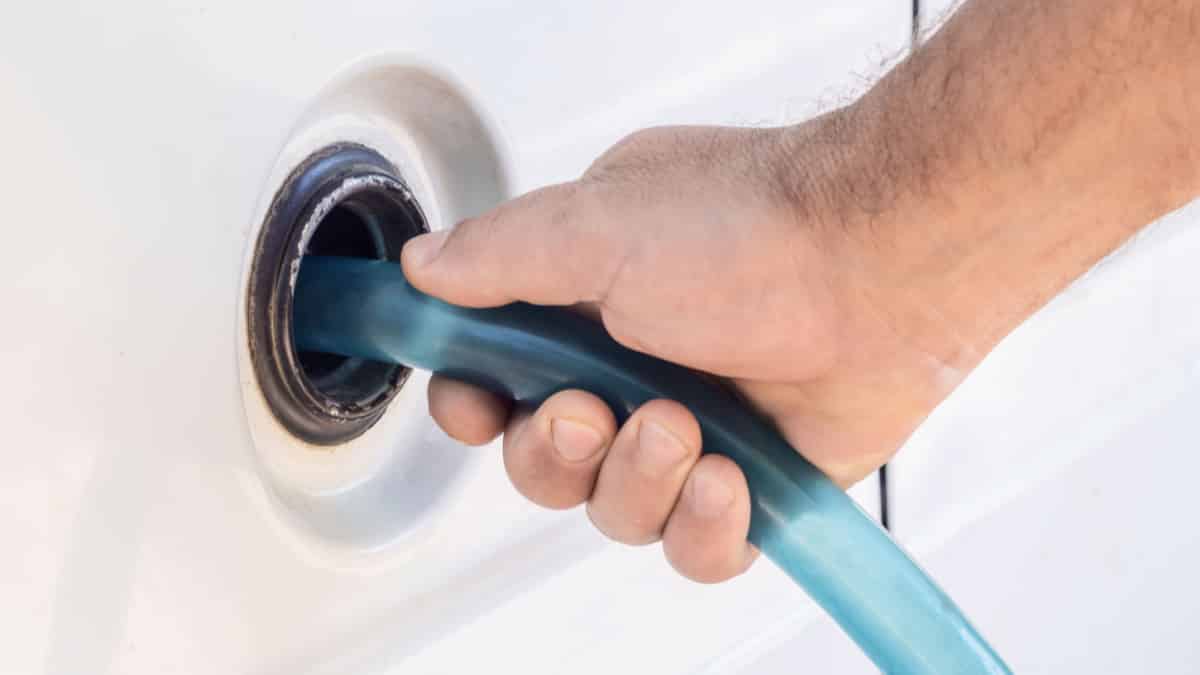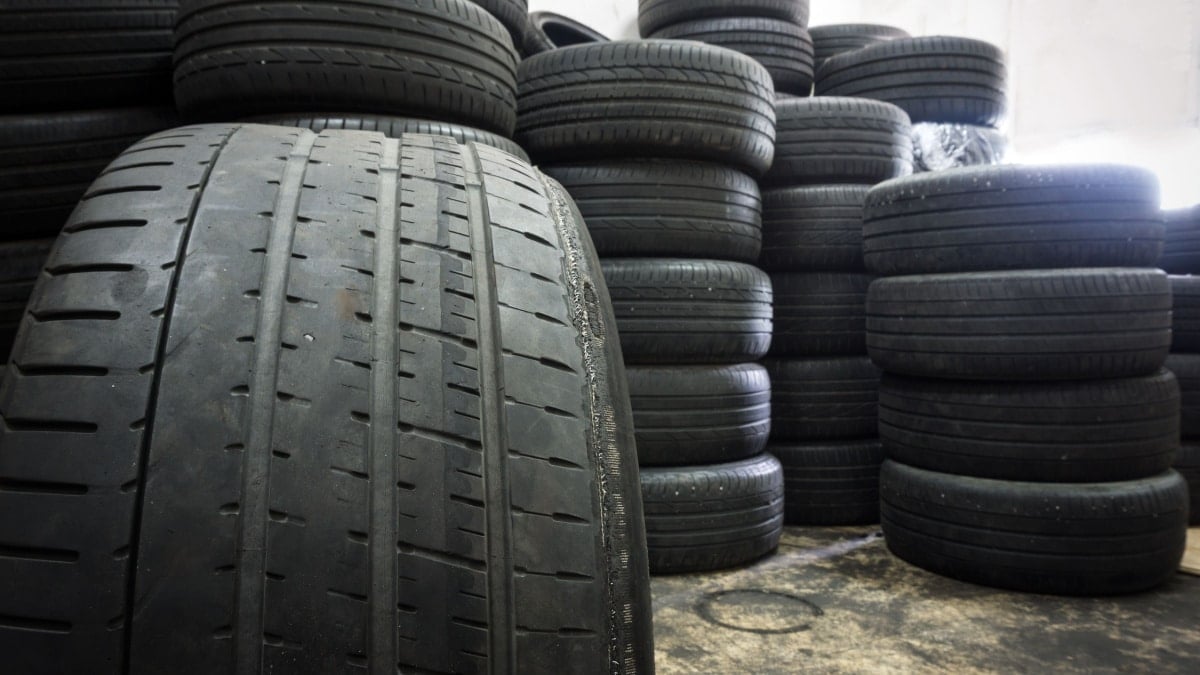Even if you visit the same fueling station regularly, it’s possible to get bad gas in your vehicle. That’s why it’s important to know the symptoms of bad gas in your car and understand the steps to repair the situation.
In this guide, I discuss all of these symptoms. Furthermore, I show you how to resolve the situation and give you tips to avoid bad gas.
Symptoms Of Bad Gas In The Tank
The most common symptoms of bad gas in your fuel tank are engine performance issues and a check engine light on your dashboard. You may notice acceleration issues, a stalling engine, or an engine that won’t start up at all.
Here is a more detailed list of the most common signs of bad gas in your car to look for:
1. Check Engine Light
When there’s a fault with the car engine, you will likely see a dashboard light alerting you to the trouble. If the Check Engine Light comes on, you must consider the possibility that the gas is bad.
However, this light alone won’t tell you what’s wrong. You want to use a professional code scanner to gain a better idea about what’s going on.
2. Acceleration Issues
Under normal conditions, the car should respond instantly when you step on the gas pedal. If there’s any hesitation when it’s time to move, there could be an issue, including the possibility of bad gas.
If bad gas is to blame, you might notice more trouble as the speeds go higher. It’s also possible that the car stops accelerating at all when the conditions are terrible.
There’s also the chance that you are experiencing erratic changes in speed one way or the other. You can have your foot off of the accelerator pedal and notice that the RPMs change on their own. These erratic changes all indicate a fuel issue, whether it’s bad gas or failure of a vital component.
3. Stalling Engine
If you are driving fine and the engine starts stalling, you might consider the fuel quality. If bad fuel is in the system, combustion can’t occur as it should.
The engine needs high-quality fuel mixed with the appropriate amount of air to burn properly. Without good gas, the demand on the engine becomes too high and the motor can stop.
RELATED: Car Stalls at Idle: What Causes a Car to Die While Idling?
4. Engine Doesn’t Start
In the worst-case scenario, the engine won’t start at all. This can happen after it has stalled or when you are first trying to start it.
If water and condensation or any contaminants have mixed with the gas, the engine might not be able to start. However, there are so many reasons for a car not to start. That’s why you have to look at all of the symptoms as a whole to figure out what’s going on.
5. Damaged Fuel Filter
In the fuel system, there’s a filter that keeps debris, contaminants and dirt out of the engine. All gas tanks have some sediment on the bottom. The role of the filter is to ensure none of this makes it to the motor, which would have disastrous effects.
If you have to change the fuel filter prematurely, it could be due to bad fuel. That’s why it’s important to keep an eye on the health of the filter and change it at regular intervals.
How to Remove Bad Gas in Your Car
1. Use Dry Gasoline
Dry gasoline would be the first solution, but it’s not guaranteed. If there’s a minimal amount of water or condensation in the tank, the dry gas might get you back up and running.
This alcohol-based additive treats a tank that was once contaminated. Follow the directions on the label to get going.
2. Siphon Out Gas
If dry gas doesn’t solve your problem, the only solution is to drain the tank. There are three ways you can do this, with siphoning being the easiest.
With a siphoning tube, you can empty the tank. However, you should never do this unless you understand the right way to do it. Additionally, you must make sure that the bad gas is placed in a qualified container and disposed of properly.
3. Drop Gas Tank
If all else fails, you have to drop the gas tank to empty it. This is no small task and it might be best to have a professional handle the job.
Again, you must have something to hold all of the gas you remove from the tank. You also need to dispose of it properly to ensure it doesn’t get dumped unethically.
4. Fill Up with Premium Fuel
Once the dry gasoline is installed, you can fill the tank back up. I recommend using high-octane fuel, even if you don’t normally. This is an important step no matter what kind of car you drive.
You want the engine to receive the best gas possible to ensure it can get started once again. The only way to counteract what’s been done is to pump through some good gas.
5. Use Drain Plug (Older vehicles)
Most vehicles don’t have a drain plug, such as what’s used to perform an oil change. However, there are some older makes and models that use it.
If your vehicle has a drain plug, you can drain the tank into a pan. Just remember that you need an adequate container to hold all of the gas as the tank could be very full. You won’t be able to stop the flow once it begins.
How to Avoid Bad Gas
1. Don’t Leave Fuel Sitting in The Tank
If you don’t drive your vehicle a lot, you need to consider the gas that’s in the tank. Just as you would take steps to protect the car battery, you must also think about the fuel.
If your vehicle will be in storage for three months or more, it’s best to drain the tank. There are some fuel stabilizers you could use, but they aren’t guaranteed to work long-term.
2. Visit Top-Tier Stations
A top-tier gas station offers fuel that’s held to a higher standard. There are plenty of top-tier gas stations available in the country and you don’t always need to pay more for this level of quality.
In fact, Costco is one of the many stations that promise top-tier fuel. You can get discounted gas at these locations with a membership.
RELATED: Which Gas Stations Have The Best Quality Gas? (Top 5 Best)
3. Use Additives
There are all kinds of fuel additives available, so it’s important to know what you are getting if you want to put something in your tank. Gas treatment and fuel injection cleaners all have a specific purpose, but won’t help to keep the fuel fresh.
Instead, you want a fuel stabilizer formula. If you aren’t driving often, the fuel stabilizer helps to maintain the quality by absorbing some of the water and slowing down oxidation.
Will bad gas ruin your engine?
Yes. Bad gas can damage your engine parts in several different ways. First of all, it can clog the fuel system. It can also cause performance issues that can damage your engine in the long run.
Will adding new gas to old gas help?
Although mixing old gas and new gas will probably make the gas better than it was before, it is not recommended. To avoid problems and a waste of money, it is much better to drain the old gas before filling the tank with new gas.
How long can gas sit in a car before it goes bad?
Regular gasoline will naturally begin to degrade over time after 3 months. It may take over 1-2 years before you start to notice any problems with the gas, but it happens gradually and depends on the environment where the car is parked.
Can you drive with bad gas?
Whether you can drive with bad gas depends on how old and bad the gas is and what type of vehicle you drive. However, driving with bad gas is never recommended, as it can cause many other problems with your vehicle such as clogging the fuel system or damaging other engine parts.
Categories: Engine
















